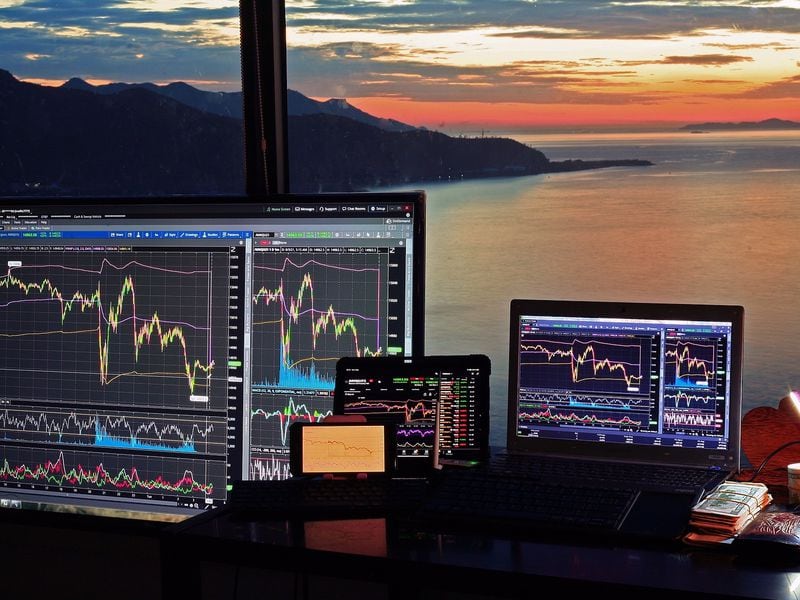Spot ether exchange-traded funds (ETFs) are expected to begin trading in the U.S. this year. The highly anticipated debut has investors positioning for higher volatility in the ether (ETH) price relative to bitcoin (BTC).
There's a possibility that the excitement about spot ether ETFs may be unfounded, one observer suggested.
The spread between the forward-looking, 30-day implied volatility indexes for ether (ETH DVOL) and bitcoin (BTC DVOL) flipped positive in April on dominant crypto options exchange Deribit. Since then, it has risen to 17%, according to data tracked by Amberdata. Implied volatility estimates the degree of future price swings based on options prices.
In other words, ether's implied volatility has been consistently greater than bitcoin's for over two months. This richness may not persist, according to Greg Magadini, director of derivatives at Amberdata.
"I continue to remain skeptical that this relative volatility premium remains persistent. A lot of cold water was splashed on the BTC ETF Inflows narrative, given the speculation that funds are merely trading the BTC basis as opposed to taking outright ETF exposure," Magadini said in the weekly newsletter.
Much of the excitement over spot ether ETFs probably stems from the fact that bitcoin ETFs have drawn nearly $15 billion in investor money since their debut in January.
ETH/BTC DVOL spread. (Amberdata) (Amberdata)Initially, BTC's price surged alongside ETF inflows. That rally has now stalled, with industry experts attributing most ETF inflows to a non-directional arbitrage strategy – the cash and carry, or basis, trade – instead of outright bullish bets.
That has toned down the bullish spot ETF narrative. After all, institutions might use spot ether ETFs to set up basis trades.
"If this is true, does the ETH ETF truly react aggressively to the start of an ETF trading? Especially by such a large margin across the board in the term structure," Magadini wrote.
Implied volatility term structure: ETH vs BTC. (Amberdata) (Amberdata)Term structure is a graphical representation of implied volatility for different maturities and is usually upward-sloping: greater volatility is expected in the longer term. Ether's term structure is significantly higher than bitcoin's, indicating heightened expectations for volatility across all time frames.
There's another sign the market might be a little too excited about spot ether ETFs: Open interest in ether futures listed on the Chicago Mercantile Exchange is significantly less than bitcoin futures. The figure for ether futures is $1.6 billion compared with almost $10 billion in bitcoin futures, according to Velo Data.
The discrepancy shows ether has yet to find the institutional acceptance of bitcoin, and inflows into the impending ether ETFs could be tepid compared with the larger cryptocurrency. Investment banking giant JPMorgan warned last month that ether ETFs may amass just $3 billion in net inflows this year.
"The true resolution to this question [about persistent of ether vol premium] comes when we see the actual ETF inflows and volume. If this looks anything like the CME OI between BTC futures and ETH futures, I think ETH still doesn’t have the mainstream enthusiasm that BTC has seen," Magadini said.
"Longterm I still love ETH, but there seems to be a trading opportunity around the 'immediate' ETH relative vol pricing today," Magadini added.
Volatility trading involves betting on the degree of price swings. Investors typically sell options or volatility futures when anticipating a slide in the implied volatility.
Edited by Sheldon Reback.
